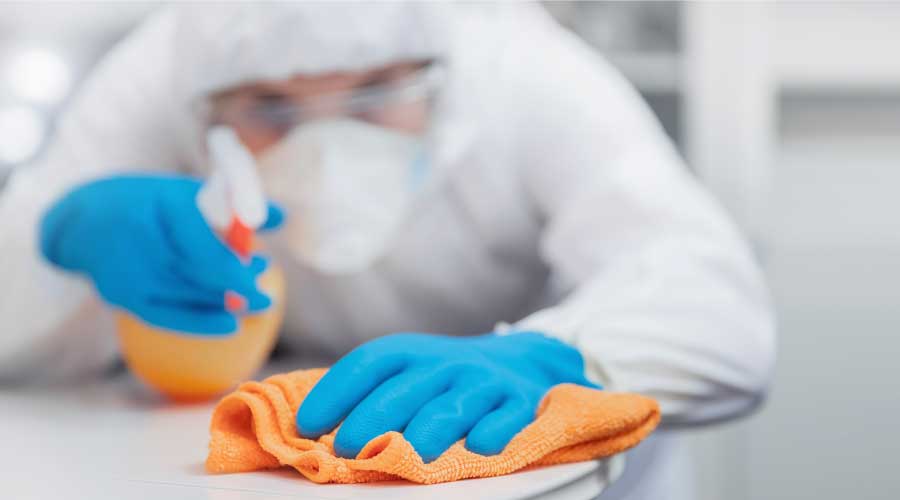In this era of increasing patient choice, imagine you are offered the choice between two identical looking hospital rooms. Your chances of picking up a multidrug-resistant organism are approximately doubled if you choose the wrong room. But you have no way of knowing which room is safest.
Since work showing that patients admitted to terminally clean rooms have an increased risk of acquiring the same pathogen as the previous occupants, there has been increased support for the environmental role in healthcare-associated infections. In fact, this arguably constitutes the best justification we have for hospital cleaning.
One rarely knows exactly how pathogens reach patients, even if we have mounting evidence for certain environmental reservoirs. An infection control staff knows only too well that tracing an infection to a specific exposure is challenging.
Cleaning and disinfecting methods deserve updating into the 21st Century, since buckets, mops, cloths, dusters, dustpans, brushes and brooms have been the standard issue for cleaning since the time of Florence Nightingale.
We do have whole-room disinfecting technology, impregnated wipes, electrostatic sprayers and automatic floor scrubbers. But the most effective cleaning practices, tailored to patient risk, are still a mystery.
How exactly should surfaces be cleaned? Is general-purpose chemistry followed by a clear water rinse as effective as a "spray and pray” disinfectant wiping? What role does dry-surface biofilm play in microbial rebound?
A so-called environmental microbiome exists. It is disrupted every time a surface is cleaned. But as is the case with the human gut, when patients suffer overgrowth of Clostridium difficile following antibiotic therapy, exposure to powerful disinfectants removes resident flora on environmental surfaces, leaving space available for other microbes to contaminate.
These disinfectants remove susceptible microbes so that only those able to withstand microbiocidal effect remain. The amount and type of recontamination might be worse than what was there in the first place.
Wiping with a general-purpose cleaner applied with a microdenier microfiber cloth is much less likely to damage the surface ecosystem — hence, support for the environmentally friendly view that we should seek to routinely remove pathogens rather than kill them and when necessary, use the least amount of the mildest chemical that will do the job. Stronger often means more corrosive to surfaces and more toxic to people.
Even if hospital cleaning and disinfecting could be globally acknowledged, the people performing the tasks are generally underrecognized and undervalued.
The status of environmental services (EVS) personnel represented by lower pay and basic conditions does not necessarily reflect the physical cleaning effort and personal risks required to protect patients from pathogens.
The disconnect between increasing attention on a clean environment and the professional level of those who make it happen has widened considerably. Hospital leaders in the 21st Century should consider the ever-increasing risk of antimicrobial resistance and untreatable infection and compensate those who prevent them.
Given the proper education, training, tools and time to do the task, one EVS technician can prevent more infections than a roomful of doctors can cure.
J. Darrel Hicks, BA, MESRE, CHESP, Certificate of Mastery in Infection Prevention, is the past president of the Healthcare Surfaces Institute. Hicks is nationally recognized as a subject matter expert in infection prevention and control as it relates to cleaning. He is the owner and principal of Safe, Clean and Disinfected. His enterprise specializes in B2B consulting, webinar presentations, seminars and facility consulting services related to cleaning and disinfection. He can be reached at darrel@darrelhicks.com, or learn more at www.darrelhicks.com.

 Rethinking Strategies for Construction Success
Rethinking Strategies for Construction Success From Touchless to Total Performance: Healthcare Restroom Design Redefined
From Touchless to Total Performance: Healthcare Restroom Design Redefined New York State Approves $53M Construction Program at Niagara Falls Memorial Medical Center
New York State Approves $53M Construction Program at Niagara Falls Memorial Medical Center How Health Systems Are Rethinking Facilities Amid Margin Pressure
How Health Systems Are Rethinking Facilities Amid Margin Pressure Ground Broken on New Medical Office Building in Scottsdale, AZ
Ground Broken on New Medical Office Building in Scottsdale, AZ